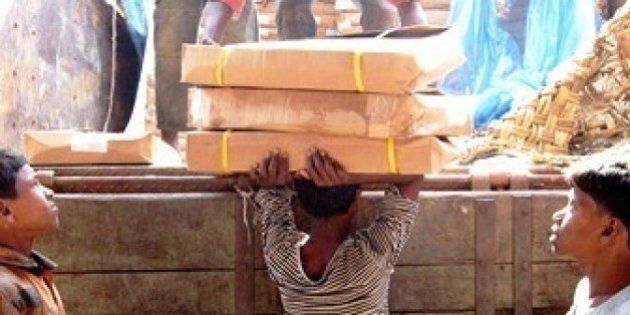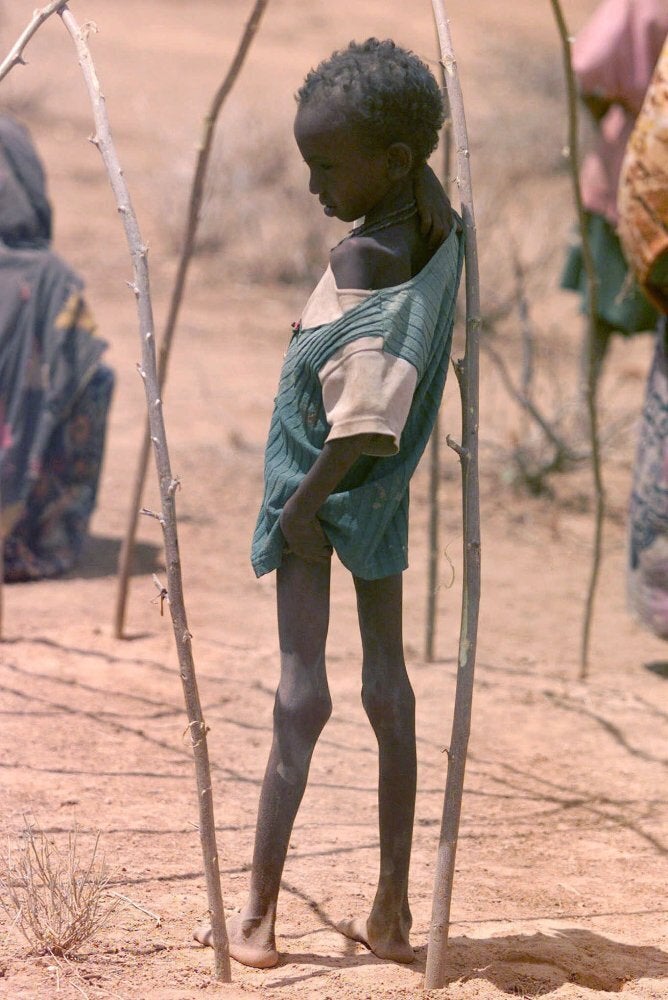
Every August, I write a blog directed at readers doing back-to-school shopping for their kids. I remind them that while the sales are great at this time of year, there's a story behind every price tag. I urge moms and dads to consider the global economy that keeps Western prices low by paying child garment workers in poor countries next to nothing.
This year, I'm the parent who went giddy over a great sale. Yesterday, I shopped at an outlet store, buying five pairs of jeans for each of my children. I was dazzled by the reduced price -- just $10 a pair -- and the grand total of $100 made me quiver with excitement. They had the right sizes and proportions for both kids, both a little odd right now as they move through their different growing stages. And get this: I walked away with a $25 coupon to use in the store next month!
Driving home, I experienced a whole series of emotions. Elation at being finished my shopping already. Excitement over the prospect of telling other parents about this incredible deal. And pride over how good my boys had looked in their brand new jeans.
But also uneasiness, as I started to recall what I'd seen on a World Vision trip to Bangladesh in the spring. I remembered driving through Dhaka staring up at dozens of massive garment factories with their hulking size and high, dark windows.

We don't know that there were any child workers inside the Rana Plaza garment factory, which collapsed in Bangladesh last year. But this picture gives you a sense of the size of these hulking buildings, and the possible consequences when they are unsafe for workers.
I thought of the children working inside, young bodies bent over machines or hand-held needlework. I knew from meeting other child workers that after a certain point in their growth, these backs never fully straighten again. I pictured the small hands that should have been throwing a ball or proudly finishing an essay -- hands now cramped with the desperate effort of keeping a needle straight for the 10th hour in a row.

Child labour can have life-long effects on the bodies of young workers. The backs of these boys we met, working in a Bangladeshi market, are already permanently bowed. The bodies of children bent over machines sustain similar pressures.
Shopping at the jeans store had been something I hadn't done in years. I had contacted this company a while back, asking about their position on child labour. I received the standard response: that the company upholds human rights and doesn't employ any children. But I knew from my travels overseas that it's almost impossible for corporations based here in North America to monitor every factory to which their massive orders are contracted and from there, subcontracted. Doing so would increase costs, and increase the prices of our products here at home.
Admittedly, it's easy to be enticed by bargains. That's why alternative options need to be easy, too. So here are some things we can ALL do to shop ethically and help reduce child labour:
- Swap with other families: Connect with families with a child bigger than my older son, offering hand-me-downs for their younger son in exchange.
- Hold group swaps: This is something I've always wanted to do. Have each parent bring a huge garbage bag full of used clothes, order pizza, and swap away.
- Shop second-hand stores: This way, you won't be directly supporting companies whom you suspect are earning money on the backs of children.
- Shop fair trade: Shops such as 10,000 Villages have things like pencil cases and gifts for teachers.
- Do your research: Contact companies on Facebook or by email, asking how they're working to improve their overseas labour practices.
- Be an advocate: Your shopping dollar holds tremendous power. If a company gives you a standard answer, ask follow-up questions such as "How do you know about your sub-contracted companies? What are you doing to find out? Do you conduct unannounced visits to the subcontractors?" Encourage these companies when they do take steps to improve their practices, or let them know when and why you're shopping elsewhere.
I've learned my lesson and realized that I'm not beholden to the shopping windows as defined by retail marketers. We don't have to jump when the ads scream "Back-to-School shopping week." Ethical shopping can take forethought, planning and commitment.
Next year I'll plan ahead and stage a clothing swap with friends in July, before we're inundated with back-to-school flyers. In fact, I might even hold a regular clothes swap every season. Winter coats appear in second-hand stores right after Halloween, and the racks are replenished regularly. Spring clothes appear in the second-hand stores as early as March.
And any day of the year is a good time to be an advocate for children overseas whose own voices are silenced by the whir of machines.
Visit World Vision Canada's No Child for Sale site to learn more ways to help.
ALSO ON HUFFPOST:
